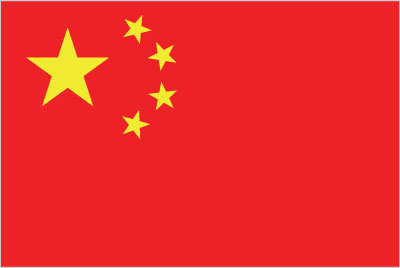
Benefits to Nepal
Introduction to Nepal
Nepal is located is South Central Asia in between its neighbouring countries that consist of China and India, and covers roughly 147 141km2. The current population of Nepal is approximately twenty-eight million, from this population over 70% rely on agriculture for their annual income.
The terrain of Nepal can be broken down into three distinct geographical regions which include the following: Terai Region, Elevated Flatlands and Hills, and Mountain Ranges(Chapagain,Personal Communications, 2016). The majority of the population and agricultural activities occupy the Terai Region and Elevated Flatlands and Hills due to the ideal climate and length of growing season(Chapagain, personal communications, September, 16, 2016). The figure to the right shows the breakdown in land usage in Nepal: 28% of Nepal’s land is used for agriculture, and 12% of land is used for pasture, the area in which domesticated animals such as cows, goats, sheep and buffalo are able to graze. It is within these two regions where the majority of Nepal’s cattle and buffalo graze(Chapagain,Personal Communications, 2016). It is also within these defined regions in which the livestock, such as cattle, can digest a piece of metal which will lead to hardware disease.
Nepal is one of the poorest countries is Asia (NEPAL, 2015).The currency that Nepal uses is called a Nepalese Rupee. One Canadian dollar is worth the same as 79.45 Nepalese rupees. GDP stands for gross domestic product, and is used to compare the wealth of certain countries. Nepal’s GDP is approximately $650.10 US dollars. The reason why it is so low is due to the fact that the people of this country are barely able to produce enough food for one’s family, leaving little time for work that could result in a slightly higher income(Lloyd & Vautier, 1999).
There are a multitude of religions practiced throughout Nepal, the top three consist of: Hinduism, Buddhism, and Muslim. Approximately 81% of people practice Hinduism(Van Kooij, 1978). Hindus believe that all living animals are sacred, more so the cow, as they believe the cow represents all other creatures(Van Kooij, 1978). Therefore, a dairy cow is not just a producer of milk and meat, it also is an iconic symbol that is worshiped by the vast majority of Nepalese people.
Dairy Industry in Nepal
Dairy is a growing industry in Nepal, and there is high demand for milk due to the increasing population and consumption occurring within Nepal (Smith, 2015). There are a two types of dairy farmers in Nepal. First, is subsistence farming, where the dairy farmer provides just enough milk to support his family. His herd consists of usually one to two cows (Redding, Chetri, Lamichhane, Chay, & Aldinger, 2012). Second, is where a Nepalese farmer overproduces so he is able to send the product off to market. The number of cattle for this venture can vary from five cows to six hundred. The most common breed of dairy cattle used in Nepal is Bos Taurus. These cattle beasts are true dairy breeds, right alongside with holsteins or jerseys. The Bos Taurus is often crossed bred with buffalo breeds to create a larger framed, longer lasting cow (Redding, Chetri, Lamichhane, Chay, Aldinger, & Ferguson, J, 2012 ).
Transportation Logistics from Canada to Nepal
The transport process for my product can be represented in the following chart below:
The transportation company that would be able to ship this export product is called: A1 Freight Forwarding. Through this flow chart it shows the cost of transportation for a half a skid of cow magnets, this is approximately four thousand-two hundred-and sixty magnets. The flight from Montreal, Quebec to Kathmandu, Nepal for one skid through A1 Freight Forwarding with regards to weight and size is calculated to be approximately thirteen hundred Canadian dollars. After the product arrives at Kathmandu it is trucked to local shops around Nepal dairy farmers, this cost is approximately five hundred Canadian dollars (Freight Shipping & Cargo Shipping by Country, n.d.).
Benefits to Nepal
Milk production is highly labour intensive, providing a lot of employment opportunity to the Nepalese people (Smith, personal communications, November 7, 2016). Cow magnets would help increase milk production as the cows are able to overcome hardware disease, as without this export there is no way to cure this fatal issue. In addition, after a cow that has a magnet administered to it, and the cow passes away the magnet is often cut out of the stomach and reused. Furthermore, having the ability to reuse these magnets the farmer doesn't need to constantly buy new ones, hence is able to save money.
Cost Analysis
To break it down in simple terms, this process makes it very effective for a Nepalese dairy farmer to get this export idea. First of all, the cost of a magnet is $3.99 Canadian (Cloutier, n.d),plus shipping and handling, and the magnet can be reused after the cow passes away. Secondly, the cost of a cow in lactation is approximately $2200 to $3000 Canadian (Smith, personal communications, November 7, 2016). Therefore, the cost of a magnet can save a farmer over $2200 Canadian as this disease is fatal if left untreated.
Documentation Required
Exporting a product from Canada takes a lot of work, and it is crucial that proper documentation is inputed. In order to export an exportation permit, certificate and license are required (Canadian Border Services Agency, 2014). In addition, the documentation must be submitted at least two hours before the product is scheduled for departure out of the country. After the shipment of the product is completed, all required documents must be attainable for over six years after exportation date (Canadian Border Services Agency, 2014).
Competition
There are multiple competitors when it comes down to the production and distribution of cow magnets. For example, Sky Magnetech (Ningbo) Co., Ltd. A large factory located in Zhejiang, China. This is a large competitor, as China is the neighbouring country of Nepal making the transportation cost a lot lower compared to shipping from Quebec.
In addition, hardware disease can be cured through invasive surgery. However, this is not feasible for Nepalese farmers, as an animal surgeon is required to preform this task. The cost of this procedure is astronomical compared to the cost of a cow magnet which can be done by the farmer with no additional assistance required(Braun, 2003).
Conclusion/Recommendations
In conclusion, cow magnets are an inexpensive product that can help Nepal farmers save their cattle from hardware disease. In addition to their small size that make them easy to transport, it also promotes trade between the two countries. However, a recommendation could be to transport the products which are manufactured in Germany straight to Nepal instead of detouring through Canada. This does not benefit Canada, however it makes it cheaper for Nepal to be able to follow through with this product, and would therefore greatly benefit from it.
Future Studies
There are several studies that can be done in the future to make this export idea even more profitable for both nations. For example, a more in depth study on transporting the cow magnets to Nepal. This study could make the transportation cost lower, and therefore more affordable to the Nepal farmers. Another example would be to have a certified vet go to Nepal to demonstrate the proper way of applying a magnet to a cow. As mentioned earlier, the process of putting a magnet in a cows stomach is difficult, and if not done properly can injure either the farmer and/or cow, and can result into further unnecessary financial expenditure on behalf of the farmer.



